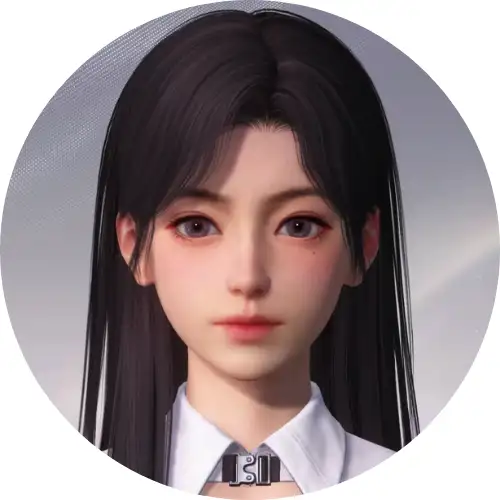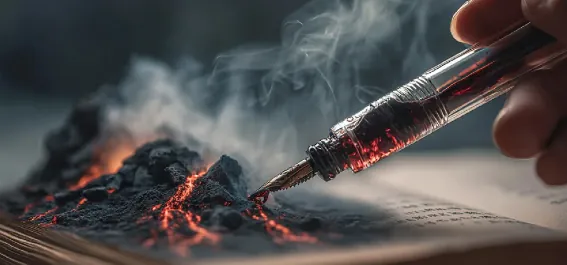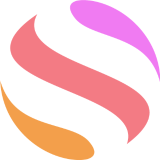Brushstrokes in Sound: 3 Prompts to Generate Crafting ASMR Scenes

Nancy Cooper · 11, Aug 2025
Why Visual Prompts Matter in the Age of Generative Video
In the evolving ecosystem of AI-driven creativity, prompts are no longer mere text cues — they are story blueprints. The specificity, texture, and sensory detail of a prompt can define whether an AI-generated image or video feels flat or genuinely immersive. With platforms like Veo 3 and Kling pushing the boundaries of ultra-realism, creators are learning to think like cinematographers, production designers, and novelists all at once.
According to a 2024 MIT CSAIL research brief, richer descriptive inputs can increase user-perceived quality of AI-generated visuals by up to 43%. In practice, this means creators who master “prompt cinematography” — framing, lighting, motion cues — can stand out in an increasingly crowded creative market.
The three examples below illustrate how visual storytelling prompts can be constructed to deliver not just a scene, but a narrative mood.

Example 1 — Metallic Blues and Silver Petals
Imagine an ultra-realistic scene lit with both cinematic depth and theatrical drama. The shot is macro — a deep-yellow beast-fur glove wraps around a hand poised above aged, yellowed leather notebook paper. The brush carries metallic cobalt-blue paint, sweeping across the page to form a pale-silver lotus. Thick strokes rise like ocean swells, petals unfolding like snow lotus in bloom. Silver glimmers pulse from the flower’s heart, while petal edges catch a soft, fragrant glow.
The air feels crisp, almost wind-stirred; faint blue halos drift in the background. Wisps of silver thread float through the air, all coalescing into a frame that is as much about mystery as it is about craft.
This is not a random decorative flourish — it’s a micro-world built for immersion. The layered cues — tactile (fur, thick paint), visual (metallic sheen, haloed light), and atmospheric (cool breeze, drifting silver) — create a multi-sensory anchor for the viewer.
Example 2 — The Quivering Lotus
This close-up focuses on precision and poetic restraint. The glove is now dark-brown leather, and the brush dips into a cobalt-blue pigment with a slight pearlescent sheen. On yellowed, ink-filled notebook pages, a layered white lotus takes shape. Thick paint catches subtle shifts in light temperature, and blue strokes trace the veins and posture of each petal.
The pistil shimmers faintly in gold, trembling as though alive. In the softly blurred background, halos and bokeh float, lending the composition a hushed, almost meditative quiet.
This prompt demonstrates a balance between technical fidelity and narrative stillness — proof that even in hyperrealism, restraint can be powerful.
Example 3 — Shallow Depth, Textured Glow
Here, the depth of field shifts to a shallow focus, lending intimacy to the frame. The glove is brown beast-fur; the paint, glossy cobalt blue. On the weathered leather page, a pale-silver lotus emerges in three-dimensional, directional brushstrokes. The lotus core radiates soft light, while petal textures read like hand-carved details under a jeweler’s loupe.
The overall tone balances warmth and coolness, with subtle halos in the background and a breeze that can almost be felt. This construction emphasizes materiality — the way brush marks, pigment thickness, and light interplay tell their own story.
Connecting These Examples
While each of these prompts differs in palette, texture, and lighting, they share a visual DNA:
- Cinematic Lighting — borrowing from film and theater to guide mood
- Material Realism — making the viewer feel the surface, not just see it
- Atmospheric Layers — using background elements to imply environment and emotion
These are the same principles that directors like Denis Villeneuve (in Dune) or production designers in Marvel films employ — and they can be translated directly into AI visual prompts.
As AI video platforms evolve, the skill of prompt writing will resemble storyboarding for film more than writing code. The audience for such works — whether art enthusiasts, tech innovators, or simply the visually curious — will increasingly expect immersive coherence rather than just striking stills.
Try it now on Kling with GlobalGPT
